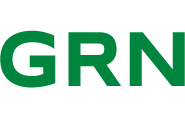The European association of transmission system operators proposes in its answer to the European Commission consultation on the review of the Renewable Energy Directive measures to increase the share of renewables in Europe's energy mix up to 27% by 2030 while maintaining a high level of security of supply and cost-effectiveness.
The proposed measures aim at:
- exposing all 'mature' renewable energy sources (RES) technologies to price signals and thus integrating RES into the market framework;
- ensuring that RES have the same balancing responsibilities as all other market participants;
- phasing-out mandatory priority dispatch for RES;
- reducing unwanted effects on the market such as negative prices;
- making sure that if support for selected RES technologies is still needed in the future, such support is market-based (such as tendering, auctions, premiums);
- improving the contribution of RES to system security through the provision of accurate feed-in forecasts and real-time data.
For Konstantin Staschus, ENTSO-E Secretary-General, "a 27% RES share requires a coordinated approach for RES support schemes because it would improve the economic efficiency of the energy transition in Europe". Harmonisation of renewables support schemes at least at regional level should be the ultimate goal, in order to avoid unnecessary distortions to the functioning of regional and European markets. To overcome the numerous political and economic challenges, ENTSO-E proposes a roadmap: starting with a gradual alignment of national schemes, opening up of schemes to foreign producers and finally increasing fiscal harmonisation at EU level to create a level playing field.
ENTSO-E finally points out that without the right infrastructure in place, the EU 20-20-20 targets cannot be achieved. "As planning transmission infrastructure is done at least 10 years in advance, stability, clarity and coherence of regulations and laws governing energy in Europe is crucial", goes on Konstantin Staschus. The association also calls for political support in communicating to the public why additional transmission infrastructure is needed for renewables integration and what benefits it brings.









